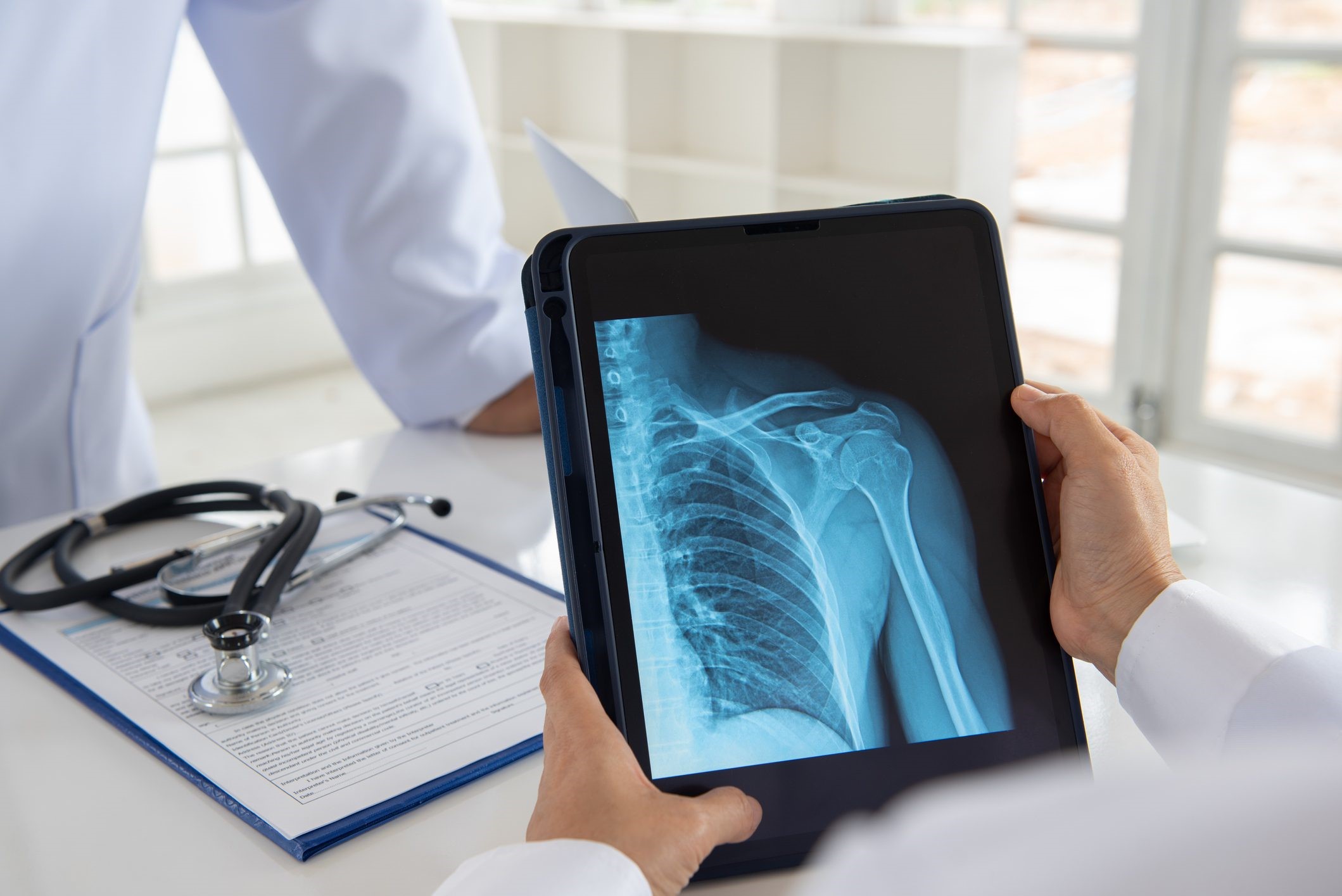
Chylothorax: definition, symptoms, causes, diagnosis, and treatment
Chylothorax manifests with difficulty breathing and originates from an interruption of the thoracic duct resulting in an accumulation of lymphatic fluid in the pleural space
Chylothorax is the presence of lymphatic fluid in the pleural space, between the leaflets (called the parietal and visceral pleura) that surround the lungs and the rib cage
Lymphatic fluid is the “medium” through which our body transports proteins, fluids and lipids from tissues-especially from the intestines-to the blood vessels.
Through the lymph, the thoracic duct transports 70-90% of the fats absorbed from the intestines to the venous circulation.
It originates from the “chyle cistern” (a structure in the abdomen that collects lymph from the lower limbs and lower trunk) and extends into the thorax to the neck, where it empties into the superior vena cava, one of the body’s major venous vessels.
An interruption of the thoracic duct causes chylothorax
In pediatric children, chylothorax most frequently occurs following surgery (usually involving the esophagus or aorta).
In only 10% of cases, chylothorax is congenital.
Other, rarer causes include superior vena cava obstructions, open chest trauma, lymphatic malformations, or thoracic tumors.
Accumulation of chyle in the pleural space can create pressure on structures in the chest, causing difficulty breathing, with cyanosis and tachypnea.
In cases where the condition originates prenatally, fetal hydrops and abnormal development of the lungs may be evidenced; in the newborn, however, chylothorax may cause malnutrition, dehydration, and immunological deficits, due to the “overflow” of nutrients and white blood cells into the pleural space.
In patients with suspected chylothorax, a pleural fluid analysis should be performed
A diagnostic thoracentesis, which is a puncture of the chest aimed at taking pleural fluid, may then be necessary.
In cases of chylothorax, physical-chemical analysis of the pleural fluid reveals the presence of many lymphocytes and a high concentration of triglycerides.
Treatment requires the collaboration of many specialists.
It must be aimed, first and foremost, at replenishing the loss of salts and the deficit of lymphocytes caused by their “overflow” into the pleural space.
It thus also aims to prevent bacterial or fungal overinfection.
Treatment is most often conservative and is expressed by fasting the child (who will be fed exclusively by vein); in some rare cases (which do not respond to this treatment), specific drug infusions (such as somatostatin) are associated.
In cases where an obstruction to venous or lymphatic outflow is identified that may be causing this clinical picture (through a second-level diagnostic test such as axial MRI), an interventional radiology approach (introducing, through a large vein in the child, a balloon or solution that will “dissolve” the thrombus in the affected blood or lymphatic vessel) can be used.
The surgical approach, on the other hand, is indicated in patients in whom conservative treatment has not yielded results after 2-4 weeks.
The characteristics of the surgery will depend on the cause of the chylothorax and the clinical picture.
Read Also
Emergency Live Even More…Live: Download The New Free App Of Your Newspaper For IOS And Android
Pneumothorax And Haemothorax: Trauma To The Thoracic Cavity And Its Consequences
What Is Transient Tachypnoea Of The Newborn, Or Neonatal Wet Lung Syndrome?
Traumatic Pneumothorax: Symptoms, Diagnosis And Treatment
Diagnosis Of Tension Pneumothorax In The Field: Suction Or Blowing?
Pneumothorax And Pneumomediastinum: Rescuing The Patient With Pulmonary Barotrauma
Cervical Collar In Trauma Patients In Emergency Medicine: When To Use It, Why It Is Important
KED Extrication Device For Trauma Extraction: What It Is And How To Use It
ABC, ABCD And ABCDE Rule In Emergency Medicine: What The Rescuer Must Do
Multiple Rib Fracture, Flail Chest (Rib Volet) And Pneumothorax: An Overview
Primary, Secondary And Hypertensive Spontaneous Pneumothorax: Causes, Symptoms, Treatment
Electrocardiogram (ECG): What It Is For, When It Is Needed
What Is Transthoracic Echocardiography?


